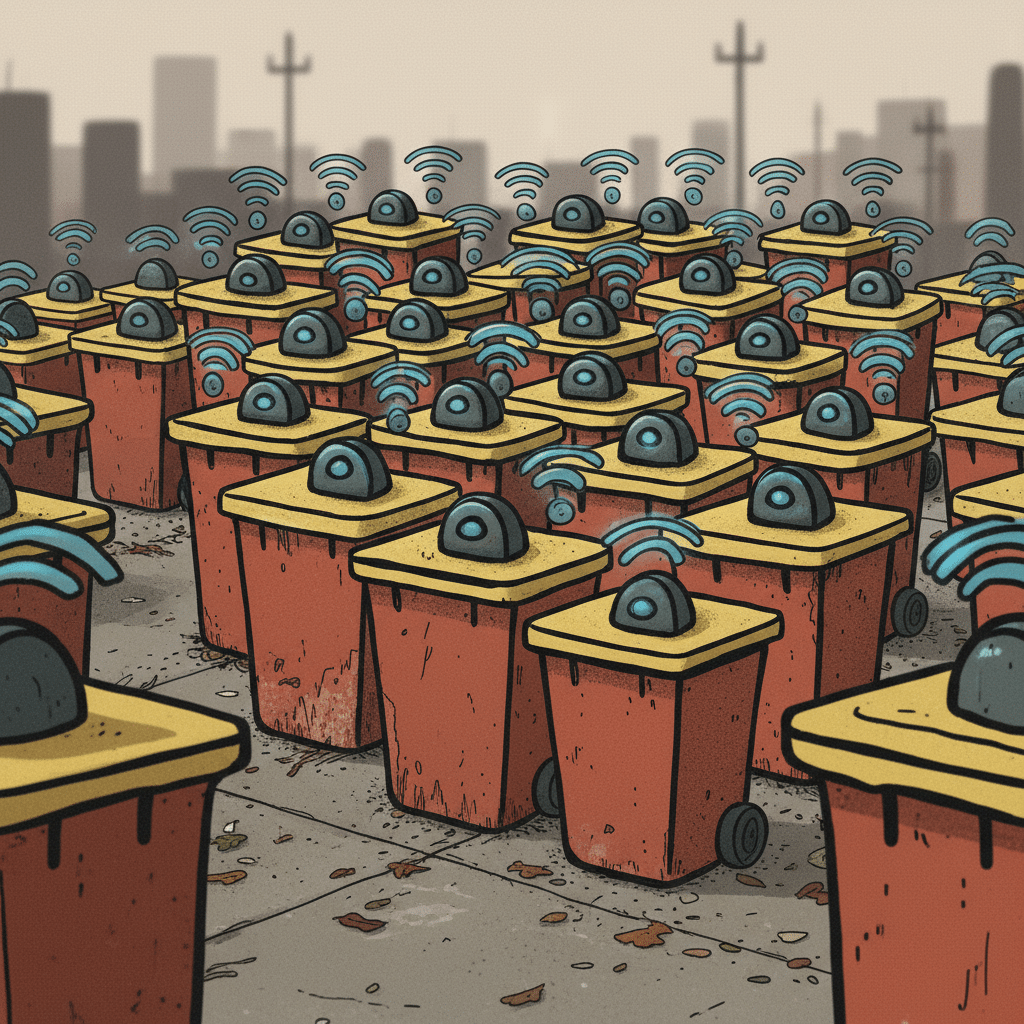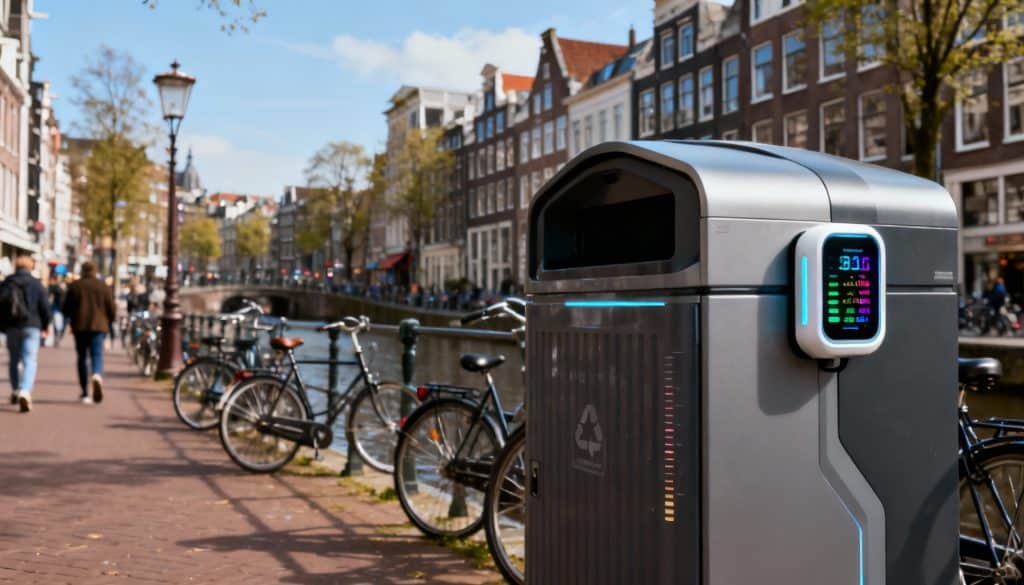Waste & material traceability solution for sustainable facilities

Implementing IoT sensors for waste collection optimization requires more than just installing devices in containers or vehicles. Success depends on understanding sensor technologies, data architecture, and integration challenges that determine whether your investment delivers measurable returns.
This guide examines the technical realities of IoT sensor deployment, from hardware selection to data processing, helping waste management professionals make informed implementation decisions.

Modern waste collection optimization relies on multiple sensor types working together:
Ultrasonic Distance Sensors: Measure fill levels with 95%+ accuracy in most conditions. Best for standard waste containers with consistent material types.
Weight-Based Load Cells: Provide precise mass measurements regardless of material density. Essential for recycling operations where material value depends on weight rather than volume. Higher initial cost but superior data quality.
Temperature Monitoring: Critical for organic waste management and fire prevention. Sensors detect decomposition heat buildup, enabling proactive intervention before problems escalate.
Tilt Sensors: Monitor container positioning and unauthorized movement. Particularly valuable for high-value containers or areas with theft concerns.
Evreka provides and supports multiple sensor types simultaneously, allowing operators to customize monitoring based on specific operational requirements.
Sensor data transmission presents unique challenges in waste management environments:
LoRaWAN Networks: Ideal for urban deployments with 2-15km range and low power consumption. Battery life extends 5-10 years with proper configuration. Limited data throughput restricts real-time applications.
NB-IoT Cellular: Provides reliable connectivity with existing cellular infrastructure. Higher power consumption but enables more frequent data transmission and remote configuration updates.
Mesh Networks: Container-to-container communication creates redundant pathways. Particularly effective in dense urban areas where individual containers may face connectivity challenges.
Research from MIT’s Senseable City Lab demonstrates that hybrid connectivity approaches reduce data loss by 40% compared to single-network deployments.
Raw sensor data requires sophisticated processing to generate operational value:
Edge Computing: Local processing reduces bandwidth requirements and enables real-time decision-making. Critical for time-sensitive applications like overflow prevention.
Machine Learning Models: Pattern recognition algorithms identify anomalies, predict fill rates, and optimize collection schedules. Models improve accuracy over time as they process more operational data.
Data Fusion: Combining multiple sensor inputs creates more reliable insights than individual measurements. Weight and fill-level data together provide material density calculations for better route planning.

Successful IoT sensor implementation follows a structured approach:
Phase 1 – Pilot Deployment (50-100 containers):
Phase 2 – Operational Integration (500-1000 containers):
Phase 3 – Scale Deployment (Full Network):
Power Management: Battery-powered sensors must operate 5+ years without replacement. Power optimization requires careful balance between data frequency and battery life. Solar charging extends operation but adds complexity and cost.
Environmental Durability: Sensors face extreme temperatures, moisture, chemicals, and physical abuse. IP67+ ratings are minimum requirements, with specialized coatings for chemical resistance.
Data Security: Wireless sensor networks create potential attack vectors. End-to-end encryption, secure key management, and regular security updates are essential.
Integration Complexity: Legacy waste management systems often lack APIs for sensor data integration. Custom middleware may be required for seamless operation.
Evreka addresses these challenges through comprehensive platform design that handles security, integration, and device management automatically. Download our fill-level-sensor one pager for more. See all Evreka one-pagers here.
IoT sensor investments require clear ROI measurement:
Direct Cost Savings:
Operational Improvements:
Implementation Costs:
Typical payback periods range from 12-24 months for comprehensive deployments, with many organizations seeing positive returns within the first year of operation.
Try Evreka ROI Calculator too see your own waste management savings.
Successful IoT sensor deployments prepare for technology evolution:
Modular Architecture: Systems should accommodate new sensor types and communication protocols without complete replacement.
Open Standards: Avoid vendor lock-in through support for industry-standard protocols and data formats.
Scalable Infrastructure: Cloud-based platforms handle growth without major infrastructure investments.
AI Integration: Modern platforms should support machine learning and AI applications as they become available.

Before deploying IoT sensors, establish clear objectives and success metrics:
Evreka provides end-to-end solutions for waste collection optimization, from sensor deployment to advanced analytics. Our technical team works with organizations to design custom implementations that deliver measurable ROI while preparing for future technology evolution.
Ready to optimize your waste collection operations with IoT sensors? Our technical specialists can help you design an implementation strategy that delivers immediate operational improvements and long-term competitive advantages. Contact Evreka Now!
Explore Evreka’s complete waste management technology solutions.
Request a demo to see how Evreka’s smart recycling solutions can improve your sustainability program and drive measurable circular economy results. Learn more about our comprehensive smart waste management solutions and explore additional success stories from our circular economy partnerships